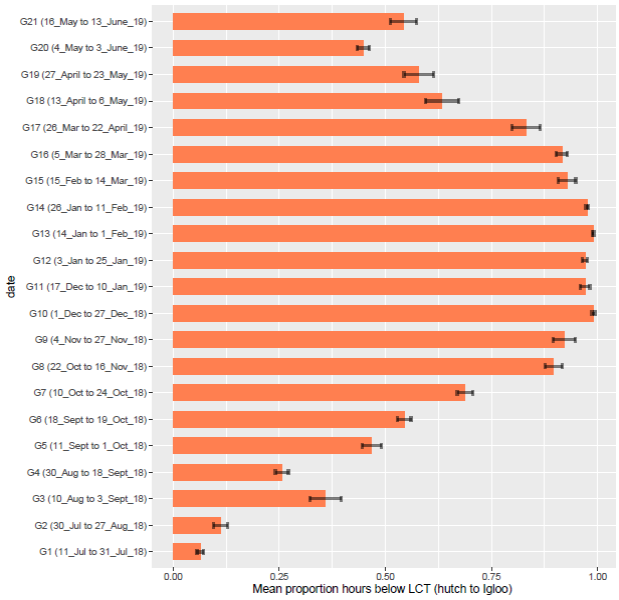Baby its Cold Outside
Recently SRUC Veterinary Services’ Dumfries centre has examined numerous milk fed dairy calves in the PM room with the expected mix of diagnoses including scour, pneumonia, rumen drinking and navel ill. A common underlying feature was that calves were thin, light and had little subcutaneous or internalised fat. Obviously these were some that had not made it, but we consider that the cold weather and energy consumption to keep warm would have been a significant pre-disposing factor for illness.
The graph below is taken from a recent PhD study carried out at SRUC Crichton Royal Farm by David Bell, funded by AHDB which we thought would be of interest in this context.
Although the study dates are 2018-19 it shows the proportion of hours calves spent below their lower critical temperature (LCT) in the first week of life. During this time they would have to their own energy reserves simply to keep warm. Like now in the winter months, this was close to 100% of the time and it is interesting to note that even in the summer months in Dumfries a significant proportion of time was below the LCT for week old calves.
Many calves actually lose weight in the first few days of life as they adjust to the extra-uterine environment. This weight loss is more severe in the winter months and will increase potential disease risk.
So keep them warm with:
- Extra bedding to allow good nesting deep in the straw
- Avoid draughts and consider that there may be easterly winds, with most sheds positioned and designed with westerly winds in mind
- Increase the concentration of calf milk replacer and ensure that it does not get cold before feeding
- Clean calf jackets can help keep the youngest calves warm and save lives
The chart below shows the mean proportion of time spent below the LCT for calves up to a week old at different times of the year.

Posted by SRUC Veterinary Services on 15/02/2021
